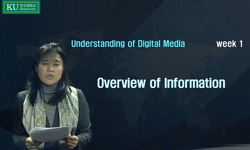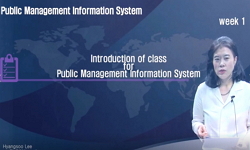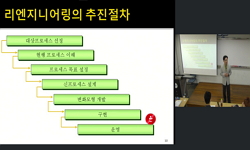The purpose of this article is to discuss the functions of final particles in the Jeju dialect and the Jeollanam-do dialect of Korean, developing the analysis first proposed in Kim Sunmi (2021a), in turn based on Kim Sunmi (2018) and Kim Sunmi (2020),...
http://chineseinput.net/에서 pinyin(병음)방식으로 중국어를 변환할 수 있습니다.
변환된 중국어를 복사하여 사용하시면 됩니다.
- 中文 을 입력하시려면 zhongwen을 입력하시고 space를누르시면됩니다.
- 北京 을 입력하시려면 beijing을 입력하시고 space를 누르시면 됩니다.

한국어와 일본어 표준어, 한국어 제주방언과 전라남도방언 종조사의 출현양상과 정보관리기능 = Appearance patterns and information management of final particles in standard Korean and Japanese, Jeju dialect, and Jeollanam-do dialect
한글로보기부가정보
다국어 초록 (Multilingual Abstract)
The purpose of this article is to discuss the functions of final particles in the Jeju dialect and the Jeollanam-do dialect of Korean, developing the analysis first proposed in Kim Sunmi (2021a), in turn based on Kim Sunmi (2018) and Kim Sunmi (2020), whose main concern is the information management marked by the final particles and sentence endings in standard Korean and Japanese. Importantly, the information management as defined in Kim Sunmi (2018, 2020) includes the re-recognition of information (analysis, admiration, surprise, confirmation) and the triggering of inference (Kim Sunmi 2021a). In this study, after reviewing the studies of Ko Jae-Hwan (2011) and Kim Jee-Hong (2014), we add the discussion of final particles of the Jeju dialect of Korean, incorporating the results of Kim Sunmi (2021a). As a result, the following three points are made. First, the final particles of the standard Korean and its dialects (Jeju and Jeollanam-do) can appear both in sentence-final position and elsewhere within a sentence, and their occurrence is limited to a certain speech level. Second, the information management realized by final particles in standard Japanese is performed by sentence-final endings in standard Korean, such as '-ci' (confirmation), '-kwun' (analysis, surprise, discovery), '-ney' (discovery, admiration), and other sentence-final endings for declarative, interrogative, imperative, hortative etc. just as in the Korean dialects (Jeju and Jeollanam-do), where the sentence-final endings play a role in marking the speaker's manipulation of the information, while the final particles do not take part in the information management, with the only exception of the Jeollanam-do dialect, which uses several final particles to mark 'confirmation', a clear example of information management. Third, the role of final particles in standard Korean and its dialects (Jeju and Jeollanam-do) in general is to distinguish speech levels, and to convey speaker's emotional solidarity with the addressee, as well as to mark emphasis.
국문 초록 (Abstract)
본 연구의 목적은, 한국어와 일본어 표준어의 종조사와 종결어미의 정보관리기능에 관해 논한 金善美(2018)과 金善美(2020)을 기반으로 한국어 방언의 종조사의 정보기능에 관하여, 한국어 제...
본 연구의 목적은, 한국어와 일본어 표준어의 종조사와 종결어미의 정보관리기능에 관해 논한 金善美(2018)과 金善美(2020)을 기반으로 한국어 방언의 종조사의 정보기능에 관하여, 한국어 제주방언, 전라남도방언의 종조사와 정보관리기능을 고찰한 金善美(2021a)의 연구내용을 소개하고 발전시키는 것이다. 金善美(2018, 2020, 2021a)에 있어서의 정보관리기능은 ①정보의 재인식기능(분석, 감탄, 놀람, 확인)을 가진다, ②추론을 촉발시키는 역할을 한다는 점이 중요하다(金善美2021a).본 연구에서는 먼저 金善美(2021a)의 성과를 살펴보고, 고재환(2011)과 김지홍(2014)의 선행연구를 검토하여 한국어 제주방언의 종조사에 관한 고찰을 더하였다. 고찰의 결과, 본 연구에서는 다음과 같은 세가지 사항을 확인하였다. 첫째, 한국어 표준어와 방언(제주, 전라남도)의 종조사는 문중과 문말 양쪽에서 출현이 가능하며, 각각의 종조사가 출현하는 스피치레벨이 정해져 있다. 둘째, 한국어 표준어에서는 일본어의 종조사에 해당하는 정보기능은 ‘-지’(확인), ‘-군’(분석・놀람・발견), ‘-네’(발견・감탄), 평서・의문・명령・권유의 어미 등, 동사의 어미로서 나타나는데, 한국어의 방언(제주방언, 전라남도 방언)에 있어서도 화자에게 있어 정보의 출입에 관여하는 형식은 활용어미가 담당하며, 종조사는 정보 출입에 관여하는 정보관리기능을 갖지 않는다. 다만 전라남도 방언의 일부 종조사는 ‘확인’이라는 정보기능을 담당한다는 것은 확인할 수 있었다. 셋째, 한국어 표준어와 방언(제주, 전라남도)에 있어서 일반적인 종조사의 역할은 스피치레벨의 구별 표지로서의 역할, 청자에 대한 화자의 감정적인 연대감의 전달, 강조 등을 담당한다는 것을 확인할 수 있었다.
참고문헌 (Reference)
1 金善美, "한일 표준어, 한국어 제주방언과 전라남도방언 종조사의 출현양상과 정보관리기능" 2022
2 고재환, "제주어개론 하" 圖書出版보고사 2011
3 김지홍, "제주 방언의 통사 기술과 설명: 기본구문의 기능범주 분석" 도서출판 경진 2014
4 김지홍, "제주 방언의 선어말어미와 종결어미 체계" 한글학회 (313) : 109-171, 2016
5 김지홍, "제주 방언 통사의 몇 측면" 경진출판 2021
6 강희숙, "전남방언 담화 표지 고찰 -종결 담화 표지를 중심으로 -" 언어정보연구원 27 : 43-67, 2011
7 李基甲, "동사와 감탄사의 조사화" 사단법인한국언어학회 2020
8 李基甲, "국어 방언의 담화표지" 圖書出版亦樂 2018
9 李基甲, "국어 방언 문법" 太學社 2003
10 金善美, "韓日終助詞と終結語尾の情報管理機能と話し手・聞き手との相関性について" Zoomによるオンライン 2021
1 金善美, "한일 표준어, 한국어 제주방언과 전라남도방언 종조사의 출현양상과 정보관리기능" 2022
2 고재환, "제주어개론 하" 圖書出版보고사 2011
3 김지홍, "제주 방언의 통사 기술과 설명: 기본구문의 기능범주 분석" 도서출판 경진 2014
4 김지홍, "제주 방언의 선어말어미와 종결어미 체계" 한글학회 (313) : 109-171, 2016
5 김지홍, "제주 방언 통사의 몇 측면" 경진출판 2021
6 강희숙, "전남방언 담화 표지 고찰 -종결 담화 표지를 중심으로 -" 언어정보연구원 27 : 43-67, 2011
7 李基甲, "동사와 감탄사의 조사화" 사단법인한국언어학회 2020
8 李基甲, "국어 방언의 담화표지" 圖書出版亦樂 2018
9 李基甲, "국어 방언 문법" 太學社 2003
10 金善美, "韓日終助詞と終結語尾の情報管理機能と話し手・聞き手との相関性について" Zoomによるオンライン 2021
11 金善美, "韓國語濟州方言の自然發話の書き起こしテキスト—昔の食べ物—" 熊本大學文學部言語學研究室 14 : 81-105, 2015
12 金善美, "韓國語標準語・濟州方言・全羅南道方言の終助詞と情報管理機能" 熊本大學文學部言語學研究室 20 : 73-86, 2021
13 李基甲, "韓國語方言の談話標識" 251 : 1-41, 2019
14 李基甲, "韓國語方言の談話標識" 天理大學 2018
15 金善美, "韓國語と日本語の終助詞と終結語尾の情報管理機能について" 19 : 33-46, 2020
16 金善美, "韓國語と日本語の終助詞と終結語尾の情報管理機能と聞き手の存在について" Zoom によるオンライン 2021
17 金善美, "韓國語と日本語の独話における終助詞・終結語尾と情報管理機能" 朝鮮學會, 於:天理大學 2018
18 金善美, "現代韓國語と日本語の"遭遇系間投詞"に表れる話し手の事態評価について" 熊本大學文學部言語學研究室 11 : 69-84, 2012
19 金善美, "比較・対照言語研究の新たな展開─三層モデルによる広がりと深まり─" 開拓社 2022
20 益岡隆志, "基礎日本語文法" くろしお出版 1992
21 李基甲, "國語學講座6方言" 太學社 449-493, 1998
22 廣瀬幸生, "三層モデルでみえてくる言語の機能としくみ" 開拓社 2017
23 千田俊太郎, "ウェブと語彙集 : 朝鮮語濟州方言語彙研究の課題と展望" 熊本大學文學部言語學研究室 16 : 35-46, 2017
24 이기갑, "「전남 북부방언의 상대높임법」" 사단법인 한국언어학회 (5) : 143-162, 1982
25 TIDA Syuntarô, "Morphological system of tense aspect and modality in the Jeju dialect of Korean" Kyoto University 2012
동일학술지(권/호) 다른 논문
-
- 국어문학회
- 치다 슌타로
- 2022
- KCI등재
-
- 국어문학회
- 서철원
- 2022
- KCI등재
-
A Study on the Relationship between Ethnicity and Language Ideology
- 국어문학회
- 전미현
- 2022
- KCI등재
-
- 국어문학회
- 김가람
- 2022
- KCI등재
분석정보
인용정보 인용지수 설명보기
학술지 이력
| 연월일 | 이력구분 | 이력상세 | 등재구분 |
|---|---|---|---|
| 2027 | 평가예정 | 재인증평가 신청대상 (재인증) | |
| 2021-03-11 | 학술지명변경 | 외국어명 : 미등록 -> Korean Language and Literature |  |
| 2021-01-01 | 평가 | 등재학술지 유지 (재인증) |  |
| 2018-01-01 | 평가 | 등재학술지 유지 (등재유지) |  |
| 2015-01-01 | 평가 | 등재학술지 선정 (계속평가) |  |
| 2013-01-01 | 평가 | 등재후보학술지 유지 (기타) |  |
| 2011-01-01 | 평가 | 등재후보학술지 선정 (신규평가) |  |
| 2010-03-01 | 평가 | 등재후보 탈락 (기타) | |
| 2008-01-01 | 평가 | 등재후보 1차 FAIL (등재후보1차) |  |
| 2006-01-01 | 평가 | 등재후보학술지 선정 (신규평가) |  |
학술지 인용정보
| 기준연도 | WOS-KCI 통합IF(2년) | KCIF(2년) | KCIF(3년) |
|---|---|---|---|
| 2016 | 0.51 | 0.51 | 0.55 |
| KCIF(4년) | KCIF(5년) | 중심성지수(3년) | 즉시성지수 |
| 0.51 | 0.5 | 0.935 | 0.16 |




 KCI
KCI







